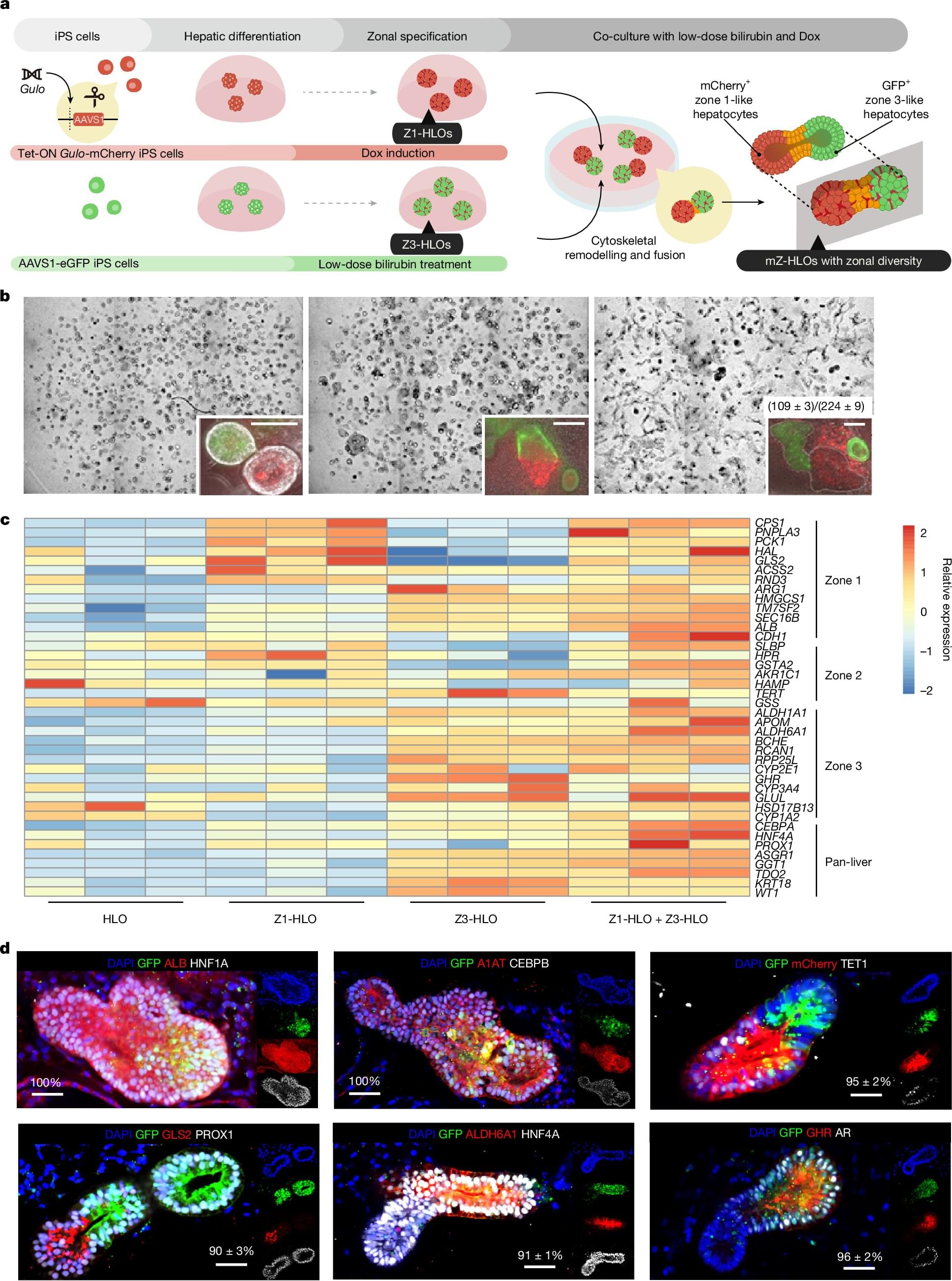One reason why our livers excel at clearing waste from our blood system is that the organ functions according to three key “zones” that perform specific major tasks. So, if scientists hope to create self-growing patches of liver organoid tissue that could help repair damaged organs, it’s important that the lab-grown tissue faithfully reproduce such zones.
In a groundbreaking paper published April 16, 2025Nature, a team of organoid medicine experts at Cincinnati Children’s reports achieving just such a milestone—made from human stem cells. When these humanized organoids were transplanted into rodents whose own liver-bile duct system had been disconnected, the improved organoids nearly doubled the rodents’ survival rate.
“The research community has long needed a better model for studying human liver biology and disease, because there are outstanding hepatocyte diversity and associated functional orchestrations in the human liver that do not exist in rodents,” says Takanori Takebe, MD, Ph.D., the study’s corresponding author. “This new system paves the way for studying, and eventually treating, a wide range of otherwise fatal liver disorders.”
